#july 17 1918
Text
Happy tragic anniversary
105 years ago, on July 17th 1918, Tsar Nicholas II and his wife, Tsarina Alexandra Feodorovna, and their five children, Grand Duchesses Olga, Tatiana, Maria, Anastasia Nikolaevna, and Tsarevich Alexei Nikolaevich.
“Goodbye, Don’t Forget Me.” -Anastasia Nikolaevna, 1918
Overlay Credits:
#made by me using iMovie#sad edit#my edit#olga nikolaevna#tatiana nikolaevna#maria nikolaevna#anastasia nikolaevna#otma#alexei nikolaevich#romanov#romanovs#tsar nicholas ii#alexandra feodorovna#captivity#yekaterinburg#1918#july 17#July 17 1918#the house of special purpose#otmaa#naotmaa#ipatiev house#mine#made by me#romanov edit#otma edit#NAOTMAA edit#edits#video edit#house arrest
38 notes
·
View notes
Text

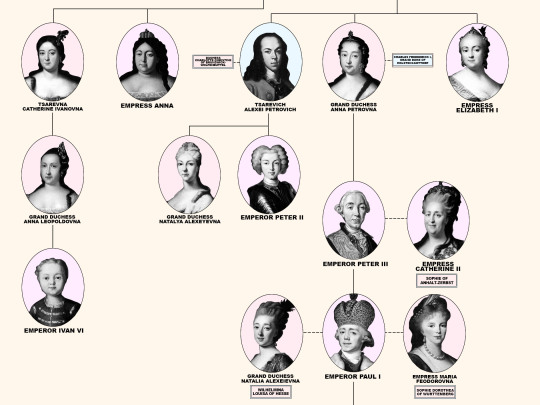
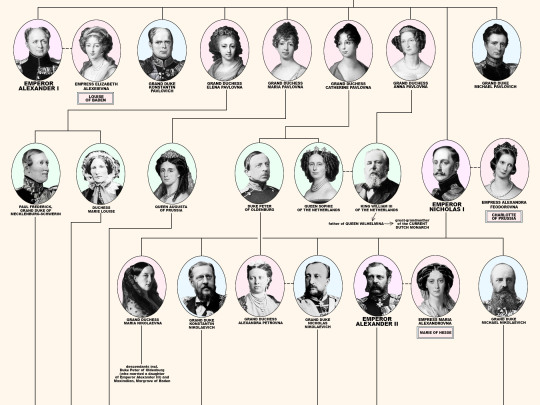
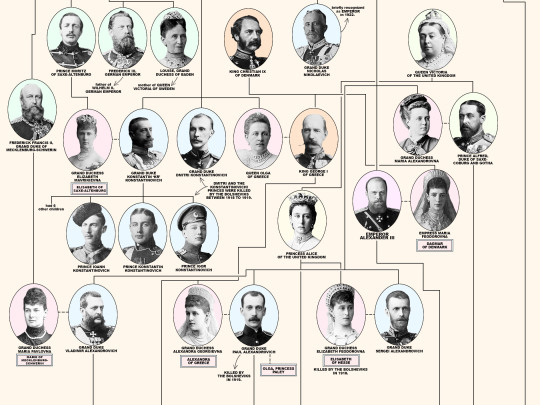

Members of the House of Romanov, the last reigning Dynasty of Russia.
From the first Romanov Russian Tsar Michael I (reigned 1613-1645) until the last Emperor Nicholas II (reigned 1894-1917). Including the 18 members of the house executed from 1918 until 1919; Grand Duke Michael Alexandrovich (13 June 1918). Nicholas II, Empress Alexandra Feodorovna, Grand Duchesses Olga Nikolaevna, Tatiana Nikolaevna, Maria Nikolaevna, Anastasia Nikolaevna, and Tsarevich Alexei Nikolaevich (17 July 1918). Grand Duchess Elizabeth Feodorovna, Grand Duke Sergei Mikhailovich, Prince Ioann Konstantinovich, Prince Konstantin Konstantinovich, Prince Igor Konstantinovich, and Prince Vladimir Paley (18 July 1918). Grand Duke Paul Alexandrovich, Grand Duke Dmitri Konstantinovich, Grand Duke Nicholas Mikhailovich, and Grand Duke George Mikhailovich (28 January 1919).
#romanovs#history#nicholas ii#alexandra feodorovna#olga nikolaevna#tatiana nikolaevna#maria nikolaevna#anastasia nikolaevna#alexei nikolaevich#myedits#peter i#peter ii#Peter iii#peter iii#Catherine the great#tsar alexei i#tsar michael#tsar paul i#alexander i#alexander ii#alexander iii#nicholas i#ancestry
272 notes
·
View notes
Text
I just realized something about some of the Hazbin characters…
Ok so real quick let’s make a list of when some of the cast died and roughly how old they were at their time of death
Alastor: 1933, 30s-40s
Husk: 1970s 60s-70s
Angel Dust: 1947, 30s
Niffty: 1950s, 22
Ok cool, let’s just fill in some blanks to get a rough idea of when everyone lived and died and what age they were at their times of death. (These are my headcanons, not official, use your own numbers if you want, it doesn’t change anything super drastically and you’ll see why)
Alastor:
Born: 1900
Died: 1933
Age: 33
Husk:
Born: 1900
Died: 1975
Age: 75
Angel Dust:
Born: 1909
Died: 1947
Age: 38
Niffty:
Born: 1933
Died: 1955
Age: 22
Ok we now have our dates. Cool.
Let’s do a quick history lesson and see what events were going on around these time periods.
WW1: July 28, 1914 – November 11, 1918
Prohibition: January 17, 1920 – December 5, 1933
The Great Depression: 1929–1941
WW2: September 1, 1939 – September 2, 1945
Cold War: March 12, 1947 – December 25, 1991
Civil Rights Movement: 1954-1968
Vietnam war: November 1, 1955 – April 30, 1975
��..do you see what I’m seeing???
They lived through some heavy shit
Husk in particular lived through damn near all these events, the only one he didn’t see all the way through was the Cold War. Genuinely amazed he’s not constantly shit faced from trying to forget some of these historical events cuz a lot of them weren’t a great time to be alive in.
No wonder they’re all so fucked up!
#Hazbin Hotel#hazbin hotel headcanon#Alastor#alastor the radio demon#hazbin hotel alastor#Husk#Husker#hazbin hotel husk#Angel Dust#hazbin hotel angel dust#Niffty#hazbin hotel niffty
118 notes
·
View notes
Text
Fabergé Eggs

Fabergé Eggs, perhaps considered one of the most famous examples of exquisite and luxurious craftsmanship to this day.
Fabergé eggs were originally commissioned by the Russian Imperial family in the late 1800s AD.
Tsar Alexander III (10 March 1845 – 1 November 1894) wanted a richly jeweled egg as an Easter gift for his wife, so Russian jeweler Peter Carl Fabergé (30 May [O.S. 18 May] 1846 – 24 September 1920) got to work and produced very first Fabergé egg in 1885 AD.
And like Easter eggs you may find hidden in your shrubs or gutters, these eggs were also intended to contain a surprise inside.
Initially, the first Fabergé egg was to contain a diamond ring, but after specific instructions given by the Emperor, the egg could be opened to find a ruby pendant instead.
Over the course of the next two decades, ten eggs were produced for the family during Alexander III’s reign, starting a dazzling tradition that his son Nicholas II (18 May [O.S. 6 May] 1868 – 17 July 1918) would carry on for his wife and his mother every Easter.
The popularity of eggs-travagant gifts spread well beyond the Imperial family, and soon, other wealthy families began commissioning their own eggs.
The eggs then began to represent great wealth and luxury that owning a Fabergé egg was considered a status symbol.
And with the skill level and time that it took to craft up just one Fabergé egg – up to one year per egg – it’s no surprise they come with such a high value.
The intricate Fabergé egg-making process began by creating a design for the egg and then the outer shell would start to come to life.
The team of goldsmiths would craft the eggs out of precious metals like gold or silver.
They were each decorated with intricate engravings, filigree work and other decorative elements.
And while his competitors used a standard palette, Fabergé wanted to experiment with more colors.
He created resplendent yellows, mauves, and all shades of greens — coming up with over one hundred and forty new colors.
Just as important as its exterior, the Fabergé egg’s interior was given just as much attention to detail.
A team of jewelers would work on creating a surprise to be hidden inside the bejeweled shell.
These surprises could be anything from miniature portraits of the recipients’ husbands to tiny replicas of famous landmarks.
The artists behind these miniature works of art were some of the best miniature painters, sculptors and engravers of that time who used a variety of material, including enamel, precious stones and even hair to create their work.
Finally, once all of the intricate pieces were complete, they were assembled by a team of skilled craftsmen to create the final product.
The egg was then presented to the recipient and would become a treasured family heirloom for years to come.
Unfortunately, the House of Fabergé was forced to close its doors during the Russian Revolution in 1917.
Fabergé and his family fled Russia.
Many of the Fabergé eggs were sold, lost or smuggled out of Russia during this time, but now, many of them are housed in museums like the famous Fabergé Museum in St. Petersburg, Russia.
However, history came full circle when in 2007, with new ownership and direction, the company announced the reunification of the brand with the Fabergé family.
This new chapter set the stage for a total revitalization of the Fabergé name and philosophy, which are in tune with its original values and spirit.
#House of Fabergé#Fabergé Eggs#Russian Imperial Family#Tsar Alexander III#Peter Carl Fabergé#Easter eggs#Tsar Nicholas II#Russian Revolution (1917)#Fabergé Museum#St. Petersburg#Russia#craftsmanship#family health#status symbol#jewelries#House of Romanov#Easter#Happy Easter#Easter Sunday#Resurrection Sunday#eggs
40 notes
·
View notes
Text
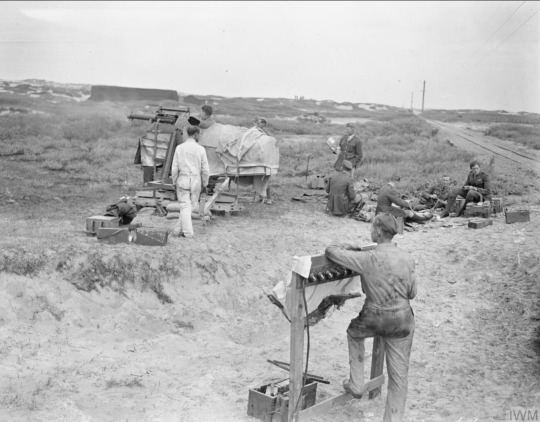


Gunnery training for pilots at the RAF Gunnery School between Rang-du-Fliers and Verton, 17 July 1918.
86 notes
·
View notes
Text
• 𝐓𝐡𝐞 𝐅𝐢𝐫𝐬𝐭 𝐖𝐨𝐫𝐥𝐝 𝐖𝐚𝐫 •
The First World War accelerated the path to modernity. It was the "Primal catastrophe" of the 20th century, an era of war, violence and displacement. It cost the lives of around 17 million soldiers and civilians, destroyed large parts of Europe and left behind unresolved problems that led to further violent conflicts.
[Without the First World War, the rise of fascism and communism and the transition to systemic competition between West and East, the 20th century cannot be understood.]
The assassination of the Austro-Hungarian heir Franz Ferdinand and his wife in Sarajevo on June 28, 1914 is regarded as the trigger for the First World War. In Vienna, the military pressed for a swift retaliatory strike against Serbia. The German Reich assured Austria-Hungary of its unrestricted loyalty to the Danube monarchy.
On July 28: Austria-Hungary declares war on Serbia - Russia starts mobilization.
On August 1: The German Empire declares war on the Russian Empire.
August 2: Invasion of German troops in Luxembourg.
August 3: Invasion of German Troops in Belgium - the First World War begins.
The age of weapons of mass destruction and industrial warfare began in early 1915 with the German chlorine gas attack on the Ypernbogen. Almost two million German, French and British soldiers died on the barren battlefields and in the trenches of the "Hell of Verdun" in 1916. However, the course of the front changed only slightly as a result of these material battles.
In total, the war claimed 17 million lives. It ended on November 11, 1918 with an armistice and the defeat of the German Reich. In Germany, the monarchy collapsed and the Weimar Republic was founded.
In 1917/1918, numerous monarchies collapsed in quick succession and were replaced by democratic republics, as was the case in Germany in November 1918.
After 1918, no new stable framework of order was recognizable - neither socially, politically nor internationally.
The new models of the Russian Bolsheviks, the fascists in Italy and the National Socialists in Germany were unmistakably opposed to the liberal legacy of the 19th century, not least in their pronounced willingness to use violence. This had to do with the diverse experiences of world war, the transitions from state war to revolution and civil war, as well as the disappointed expectations in many societies in view of the peace treaties of 1919.
#german history#history#teaching#studyblr#studying#booklr#books#literature#I will teach you history on a creative way not the boring teacher way#aestetictumblr#germany#italy#russia#history is important#world war#world war ii#world war 1#20th century#19th century#political#politics#study blog#study motivation#I Love studying lmao unpopular opinion#I’m new on Tumblr#spread knowledge#knowledge#I want to know everything like Faust#important history#historical facts
46 notes
·
View notes
Text
105 years ago, on the night of 16/17 July 1918, the Romanov family and their attendants were killed in Ekaterinburg.
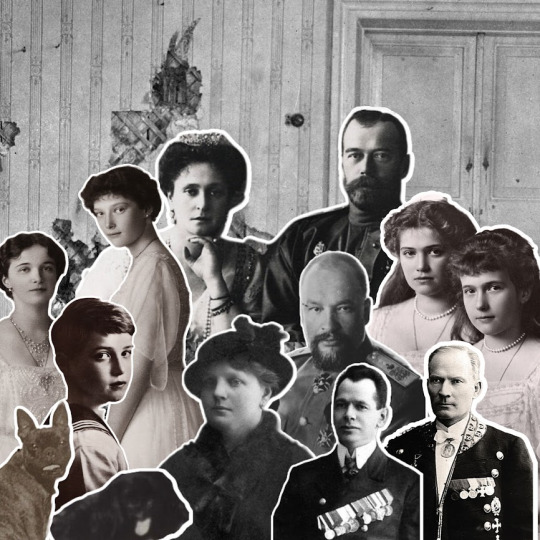
Pierre Gilliard, the beloved tutor of the imperial children, was one of the first people to enter the Ipatiev House after the murders. As part of the Sokolov Investigation into the crime and the subsequent media frenzy, he gave these statements:
“…the stoves; they were all full of various burned articles. I recognised a considerable number of burned things such as tooth- and hair-brushes, pins and a number of small things bearing the initials: "A. F." [Alexandra Feodorovna.]”
"I then went to the lower storey, the greater part of which was a basement. I entered with intense emotion the room in which, perhaps, they had died. Its aspect was most sinister. Daylight came in through a window with iron bars across it. The walls and the floor bore marks of bullets and bayonet thrusts. It was quite obvious that a dreadful crime had been committed there, and that several people had been killed.
In my despair believed that the Emperor had perished, and, that being the case, I could not believe the Empress had survived him… Yes, it was quite possible that they had both been killed. And the children? Had they also been massacred? I could not believe it. The idea was too horrible. And yet everything seemed to prove that the victims had been numerous."
Nicholas II Alexandrovich Romanov (1868-1918)
Alexandra Feodorovna Romanova (1872-1918)
Olga Nikolaevna Romanova (1895-1918)
Tatiana Nikolaevna Romanova (1897-1918)
Maria Nikolaevna Romanova (1899-1918)
Anastasia Nikolaevna Romanova (1901-1918)
Alexei Nikolaevich Romanov (1904-1918)
Dr. Evgeny Sergeievich Botkin (1865-1918)
Anna Stepanova Demidova (1878-1918)
Ivan Mikhailovich Kharitonov (1872-1918)
Alexei Aloise Egorovich Trupp (1856-1918)
Ortipo (1914-1918)
Jimmy (1915-1918)
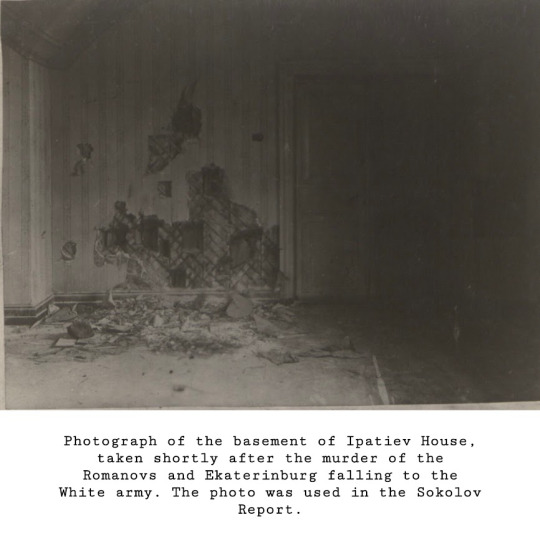









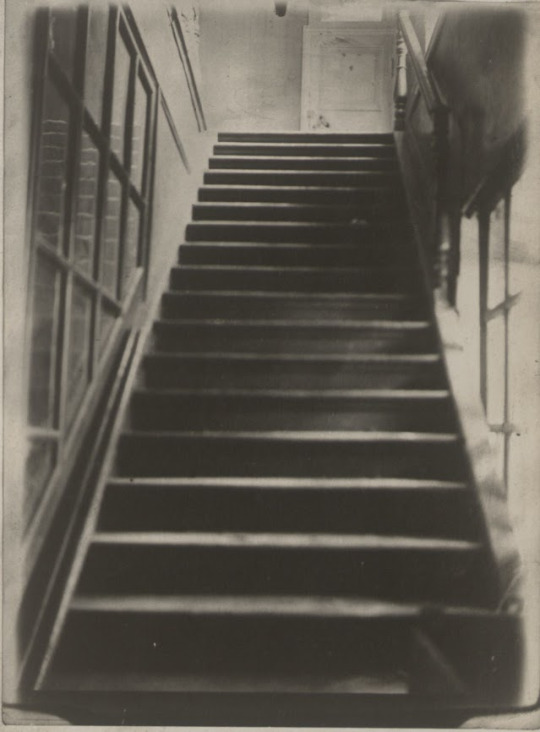
SOURCES:
The Last Days of the Romanovs, Telberg, Wilton, Sokolov. The Crime of Ekaterinburg, Illustrated London News
#olga nikolaevna#tatiana nikolaevna#maria nikolaevna#anastasia nikolaevna#alexei nikolaevich#Tsar Nicholas II#Alexandra Feodorovna#Alexei Trupp#Aloise Trupp#Anna Demidova#Dr. Botkin#Evgeny Botkin#Ivan Kharitonov#Jimmy#Ortipo#OTMA#NAOTMAA#Romanov family#Russian history#imperial russia#Ipatiev House#Ekaterinburg#Nikolai Sokolov#Sokolov Report#sources#Pierre Gilliard#my own
101 notes
·
View notes
Text


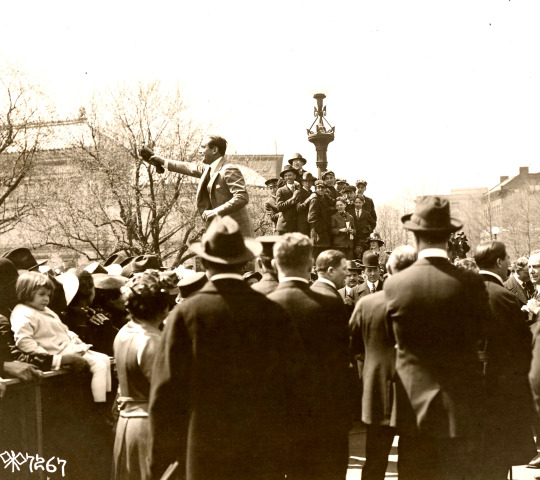

Charlie Chaplin, Douglas Fairbanks and Mary Pickford open the Third Liberty Loan War Bond drive in Washington D.C. on April 6th 1918 (the one year anniversary of the U.S. entry into the war, though Europe had been at war with Germany since July 1914.).
There were four Liberty Loan War Bond drives April 1917, October 1917, April 1918, September 1918 and a final Victory Liberty Loan Bond drive September 1919. 17 billion dollars was raised to finance the war equivalent to approx. 300 billion today.
20 notes
·
View notes
Text

1918 05 Dusk Sortie - Russell Smith
Capt. Edward “Mick” Mannock was known as an aggressive fighter and a great leader by the men who served with him. Starting out the war in a Turkish prison camp, Mannock was repatriated to England a year later where he eventually joined the RFC. He quickly rose to the rank of flight commander while at the same time running up his victory score. In February of 1918 he was appointed flight commander of the newly formed 74 Sq. which was being equipped with SE5As. He claimed a total of 36 victories with 74Sq, 17 of which were in D/278, making it one of the RAF’s highest-scoring SE5As.Mannock would later be appointed Squadron Commander of 85Sq, where he continued adding to his impressive victory total before be shot down and crashing to his death on July 26, 1918. Mannock’s official victory total is 61. However, according to his squadron mate Ira Jones it was actually 73 - one more than Billy Bishop, the official highest-ranking British ace of WWI. According to historian Norman Franks, an above average percentage of Mannock’s victory claims can be corroborated with German records. He was among the most decorated men in the British Armed Forces. He was honored with the Military Cross twice, was one of the rare three-time recipients of the Distinguished Service Order, and was posthumously awarded the Victoria Cross.
23 notes
·
View notes
Text

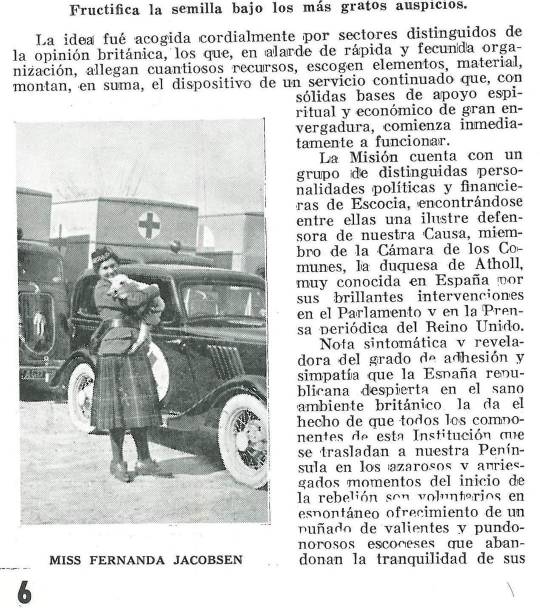
On April 10th 1936 Activists including the 'Red Duchess of Athol' formed a committee to send an ambulance to Spain in memory of three Dundonians killed while fighting for the Spanish Republican government.
A remarkable Scottish woman of principles.....
I’m using this wee bit of history to actually tell you about one of the woman in particular here, I will touch on the Ambulance story during the post, but in the main it’s about one remarkable lady
The Red Duchess, or Katherine “Kitty” Murray, the Duchess of Atholl, as she was formally known, was Scotland’s first female MP, The Red Duchess tag is a bit of a misnomer, as Kitty was a Tory politician, but beffore you judge her on this, please don’t hold that against her though, read the post and then judge her.
Kitty shook up parliament with her high principles and disregard for old school tribal politics, she joined the House of Commons in 1923 after winning the seat of Kinross and West Perthshire for the Conservatives. She also realised the threat Hitler posed and defied her party whips – reading Mein Kampf in the original German and giving translations to Chamberlain and Churchill to try to convince them of the imminent danger.
She was a woman full of contraries, before women had received the vote in 1918 she had outspokenly opposed giving them the vote, arguing that they were not yet sufficiently educated!
In the late 1920s her attention shifted to international issues. She supported a campaign to prevent female genital mutilation in the British colonies in East Africa and she became concerned over developments in the USSR: her book The Conscription of A People exposed and denounced Soviet forced-labour practices.
Her understanding of the dangers the Nazi’s posed influenced her support for the Spanish Republic after the failure of the attempted military coup in July 1936.
The U.S. journalist Louis Fischer gave this assessment of her;
“In her old-fashioned black silk dress that fell to her shoe tops she would sit on the platform, at Spain meetings, with Communists, left-wing socialists, working men and disabled International Brigaders and appeal for help for the Republicans. She would interrogate everybody who had been to Spain and hang on their words and note many of them in a book filled with her illegible scrawl.”
It was the ease with which she aligned to the communists fighting in the Spanish Civil War, that the Red Duchess name came about. It was much more than politics with Kitty though, she organised the evacuation of nearly 4,000 children from Bilbao and accommodated them in Britain.
It was Katherine Murray and another Scottish woman Fernanda Jacobsen who helped with humanitarian efforts during the war in Spain, Jacobsen became commandant of the Scottish Ambulance Unit (SAU) which provided humanitarian assistance in three convoys.. Jacobsen led the first unit of six ambulances and a lorry, with a crew of 19, which set out from Glasgow on 17 September 1936. Over the course of the war there were three such convoys, all led by Jacobsen.
The Red Duchess toured Scotland to raise support, stirring audiences into action with her spellbinding oratory, and visited Spain with Labour MP Ellen Wilkinson. The fruit of her journey was the enormously affecting book 'Searchlight on Spain', which sold 300,000 copies in Britain. The aristocrat's work demonstrated the social breadth of the Aid for Spain campaign in Scotland, and inspired women from all backgrounds.
While casting aside the politics of left and right, Atholl believed in the right for the Republicans to legitimately govern and defend themselves. The Duchess, who was also an accomplished pianist and composer, proved to be a heavy weight and fearless operator - but her name today remains relatively obscure.
It wasn’t all about Spain though, The Duchess, even before she had taken her seat in Westminster, had already reported on the dire state of health provision in the Highlands and Islands as part of the influential Dewar Committee, whose findings became the blueprint for the NHS in Scotland.
As I said earlier this was a woman of contraries and her opposeition of women’s suffrage at 21,led to Lady Astor, the first English female MP to take their seat in Westminster, derided her as “Canute trying to keep the waves back.”
Later, her position changed and the Duchess would befriend Sylvia Pankhurst who was to publicly endorse her as an independent candidate in the 1938 by-election which she triggered after losing the support of her local party over her views on Nazi Germany. At the time there was a widespread feeling of appeasement towards Hitler and his policies, Kitty Murray was a lost voice in her opposition to them. Such was her belief that she resigned her seat and stood as an independent, fighting almost entirely on this single issue.
A telegram from Stalin supporting the Duchess' campaign inflicted further damage to a campaign that was set against the vast resources of the Conservative Party. She lost the election by just 1,305 votes.
Her friend and campaign organiser Frieda Stewart said: “The challenge was one of principle against a whole party-political machine; and the Tories were determined that they were not going to be put in their place by one dissident individual, whatever her title.”
Murray, who authored several books, largely stepped away from the fray of public and political life following her defeat.
Following the death of her husband in 1942, she became Honorary Colonel of the Scottish Horse Regiment and also served as President of the Perthshire Branch of the Red Cross Society. Kitty Murray, the Duchess of Atholl spent spent a lot of her private income on assisting refugees. With the support of the Foreign Office she broadcast a message of support in the autumn of 1944 to the Poles resisting the Germans in Warsaw. She was also very concerned for those suffering at the hands of the Soviets. Just before the war ended, the Duchess of Atholl, chaired the British League for European Freedom, a post which she held up to her death in 1960.
Katherine “Kitty” Murray, the Duchess of Atholl died in Edinburgh in 1960, aged 85, after falling from a wall.
Read more about this all but forgotten woman here https://www.basquechildren.org/-/docs/articles/atholl2019
9 notes
·
View notes
Text
Ein Heldenleben (A Hero's Life) is an expanded version of Manfred von Richthofen's memoir Der Rote Kampfflieger (The Red Baron). In addition to the autobiography, it includes letters from Manfred to his family (like the 1933 edition) and some chapters that were not included in the book, as well as other comments and anecdotes from people who were close to him. It also includes accounts by his brother Lothar von Richthofen.
Overview:
Visit to the Great Headquarters
My Engagement
A flight in an observation balloon
A day at Staffel 11 (by Lothar von Richthofen)
At Jagdgeschwader Richthofen (by a Dutch reporter)
Richthofen as leader and comrade (by Leutnant Friedrich Wilhelm Lübbert, Jasta 11)
In memory of Richthofen (by v. B.)
An encounter (by Emil August Glogau)
The mother about the boy Manfred
Letter by Leutnant Hans Joachim Wolff to Leutnant Lothar Freiherr von Richthofen
How Richthofen shot down his seventy fifth victory (by Leutnant Lampel)
Richthofen (by Erich von Salzmann):
Part 1
Part 2
Part 3
At court for the second time
Letters of Erwin Böhme: Before the war, Erwin Böhme worked as an engineer in East Africa. When the war started he was already 37 years old. This did not stop him and he became a successful fighter pilot, being personally selected by Boelcke to join his fighter squadron. In 1916 he met the daughter of a former business colleague and they fell in love. The following letters are those Böhme wrote to his later fiancée Annamarie during the war days.
[Translated are the parts of the letters where Böhme describes his life as a fighter pilot.]
Landres, 24 June 1916
Kowel, 7 July 1916
Kowel, 3 August 1916
Kowel, 15 August 1916
Bertincourt, 11 September 1916
Bertincourt, 21 September 1916
Somme, 4 October 1916
Somme, 18 October 1916
Lagnicourt, 31 October 1916
Lagnicourt, 12 November 1916
Jagdstaffel Boelcke, 12 December 1916
Partenkirchen, 28 January 1917
Jagdstaffel Boelcke, 8 April 1917
Valenciennes, 25 April 1917
Valenciennes, 9 May 1917
Valenciennes, 3 July 1917
Jagdstaffel 29, 16 July 1917
Jagdstaffel 29, 7 August 1917
Jagdstaffel 29, 17 August 1917
18 August 1917
Jagdstaffel Boelcke, 21 September 1917
“With the aces”, 20 October 1917
Rumbeke, 31 October 1917
Back with the aces again, 31 October 1917
4 November 1917, Sunday morning
Jagdstaffel Boelcke, 14 November 1917
Bavikhove, 16 November 1917
Bavikhove, 19 November 1917
27 November 1917
The End
Rudolf Berthold – a man who never let himself be dissuaded from his convictions. A man who, despite the worst injuries always returned to the front as quickly as possible. A man for whom the war was not over, even if it was over for his country. A summary of Bertholds life can be found in the pinned post over @subtile-jagden
The following are translated diary entries as well as some of his letters.
Before mobilization
It is getting serious!
First challenges
Emergency landing
Important reconnaissance flights during the advance
The most beautiful day of my life!
Finally a pilot!
Buddecke, the dear comrade!
Feldfliegerabteilung 23
End of 1915
Single seater fighter unit Vaux and the first victories
An unfortunate day for Berthold
Back to the unit
Jasta 4, the Pour le mérite and a new challenge
Beginning of 1917
Finally off to Flanders
End of 1918: Ceasefire and revolution
1919 / 1920: Uncertainties, Soldier´s Councils and the Last Fight
Ernst Jünger was a passionate diarist. During his time in the First World War, he filled 14 diaries. Based on these entries, he wrote his popular book Storms of Steel. The diary entries provide additional information, funny stories and reveal his true feelings during this turbulent time.
First experiences
Officer Candidate and Relocation
First Cannonade
First wound
Back at the front
Days at the front and stories from old friends
Quéant
Friendly contact with the enemy
New year, same situtation
A love affair
Officer training course
Back in the trenches and dangerous patrols
Mine warfare and gas attacks
An English prisoner and a funeral
Summer 1916
Battle of the Somme Part 1
A short break from fighting and another injuriy
Wartime conditions
Another injury
30 notes
·
View notes
Text
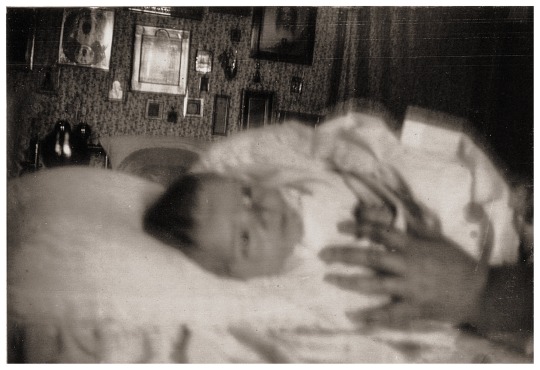

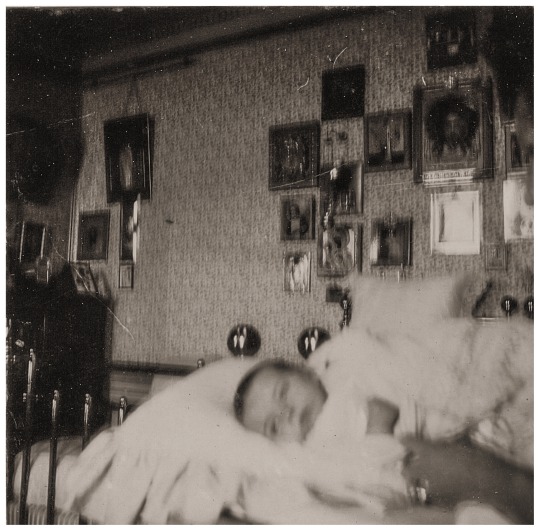
-Alexei Nikolaevich
Alexis, Russian in full Aleksey Nikolayevich, Aleksey also spelled Aleksei, (born August 12 [August 25, New Style], 1904, Peterhof, near St. Petersburg, Russia—died July 17, 1918, Yekaterinburg), only son of Nicholas II, the last tsar of Russia, and the tsarina Alexandra. He was the first male heir born to a reigning tsar since the 17th century.
-
The beaming father wrote in his meticulously kept diary: An unforgetta-ble and great day, on which we received so evident a sign of Gods love. At aquarter past one in the afternoon Alix had a son, who was named Alexei during prayers. […] No words are adequate to thank God for the consolationhe has bestowed on us in this year of difficult tribulations! Alexeis mother,Alexandra, wrote: Weight—4660, height—58, head circumference —38, chestcircumference—39.
—
@rylhistory on instagram.
29 notes
·
View notes
Text
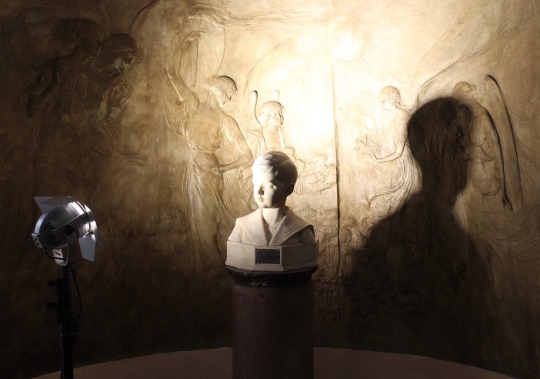
I was wandering in Pietro Canonica museum in Villa Borghese park and this one caught my attention. The sculpture was made in 1910 and it depicts a boy named Alessio Romanoff, the last Tsesarevich of the Russian empire. He was born with haemophilia, a disease that impairs the body's ability to make blood clots, a process needed to stop bleeding. As if this was not enough, before the Russian Civil War, the Ural Regional Soviet ordered his murder to end the royal bloodline. On 17 July 1918, the 13 year old boy that appears on the sculpture, his parents, three of his sisters, and the four retainers were brought to a small room in their house, where a fire squad executed them. Rumors persisted for decades that Alessio had escaped his execution, with multiple impostors claiming his identity. You may ask “what is it so interesting about it?”. Please, look at the boy’s shadow and tell me it’s not a shadow of an adult… I found out that it was not intentional and the lamp was just there to simply light up the statuette. This gives me chills. Am I the only one that see a man’s figure on that boy’s shadow?
8 notes
·
View notes
Text





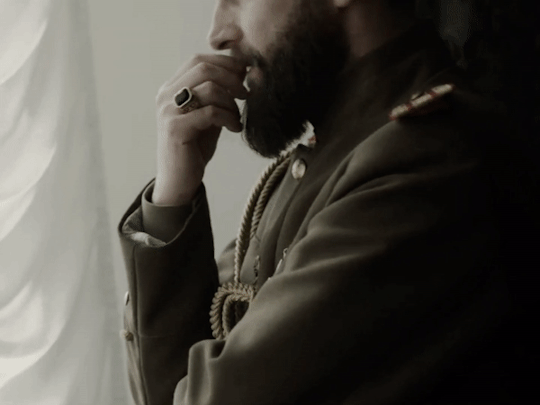
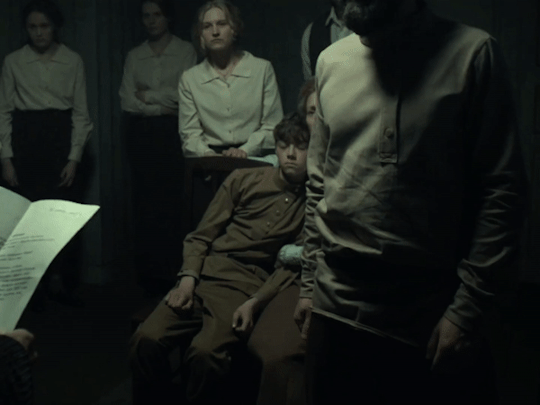
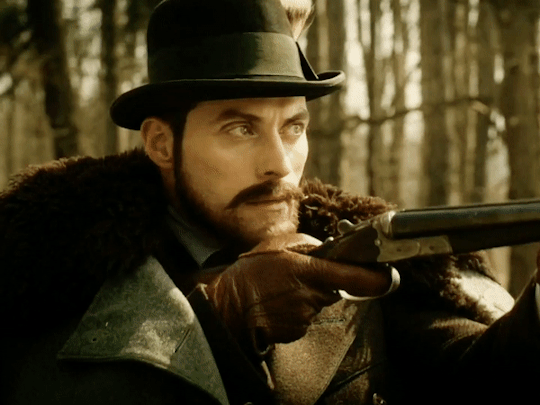
Nicholas II or Nikolai II Alexandrovich Romanov (18 May [O.S. 6 May] 1868 – 17 July 1918), known in the Russian Orthodox Church as Saint Nicholas the Passion-Bearer, was the last Emperor of Russia, King of Congress Poland and Grand Duke of Finland, ruling from 1 November 1894 until his abdication on 15 March 1917. During his reign, Nicholas gave support to the economic and political reforms promoted by his prime ministers, Sergei Witte and Pyotr Stolypin. He advocated modernization based on foreign loans and close ties with France, but resisted giving the new parliament (the Duma) major roles. Ultimately, progress was undermined by Nicholas's commitment to autocratic rule, strong aristocratic opposition and defeats sustained by the Russian military in the Russo-Japanese War and World War I. By March 1917, public support for Nicholas had collapsed and he was forced to abdicate the throne, thereby ending the Romanov dynasty's 304-year rule of Russia (1613–1917).
𝐑𝐮𝐟𝐮𝐬 𝐒𝐞𝐰𝐞𝐥𝐥 𝐚𝐬 𝐓𝐳𝐚𝐫 𝐍𝐢𝐤𝐨𝐥𝐚𝐢
#Russian history#tzar nikolai#nicholas ii#Rufus sewell#cast#gif#historyedit#nikolai romanov#the romanov family#the romanoff#mine#dreamcast#Nicholas romanov#perioddramaedit#perioddrama#period#drama
125 notes
·
View notes
Photo

TV Guide - January 11 - 17, 1964
Marjorie Lord (born Marjorie Wollenberg; July 26, 1918 – November 28, 2015) was an American television and film actress. She played Kathy “Clancy” Williams, opposite Danny Thomas’s character on Make Room for Daddy and later Make Room for Granddaddy. (Wikipedia)
June Lockhart (born June 25, 1925) Actress, primarily in 1950s and 1960s television, also with performances on stage and in film. On two television series she played mother roles, Lassie and Lost in Space. She also portrayed Dr. Janet Craig on the CBS television sitcom Petticoat Junction (1968–70). (Wikipedia)
Amanda Blake (February 20, 1929 – August 16, 1989) Actress best known for the role of the red-haired saloon proprietress “Miss Kitty Russell” on the western television series Gunsmoke. (Wikipedia)
Barbara Hale (April 18, 1922 – January 26, 2017) Actress best known for her role as legal secretary Della Street on more than 270 episodes of the long-running Perry Mason television series (1957-1966). She reprised the role in 30 Perry Mason movies for television (1985-1995). (Wikipedia)
16 notes
·
View notes
Text

1918 07 16 Franz Ray 16th victory - Mark Postlethwaite
Although the SPAD VII flew its first combat mission in August 1916 and Albatros D Ills began reaching frontline units four months later, both were still in service at the time of the armistice in November 1918. Even at that late date French escadrilles de chasse generally consisted of 12 SPAD Xllls, the spur reduction gear of whose Hispano-Suiza 8B engines were still prone to problems, and a 'backup' contingent of six direct-drive SPAD VIIs. SPA161's MdL Emile Vieil (one of the unit's original members from its formation on 5 January 1918) was flying a dawn patrol in one such SPAD VII when he went missing in action on 16 July 1918. His was apparently the SPAD credited as downed near Tahure at 0545 hrs by Ltn Franz Ray, commander of Jasta 49, an Amerika Programm unit that still had yet to receive Fokker D VIIs at that late stage of the war. Forced to settle for whatever was available, Ray preferred the OAW-built D III over the Albatros D V, D Va or any other fighter type short of the D VII Germany had to offer. This, Ray's 16th of 17 victories, may well have been the last encounter between these old, yet not quite outdated, adversaries.
19 notes
·
View notes